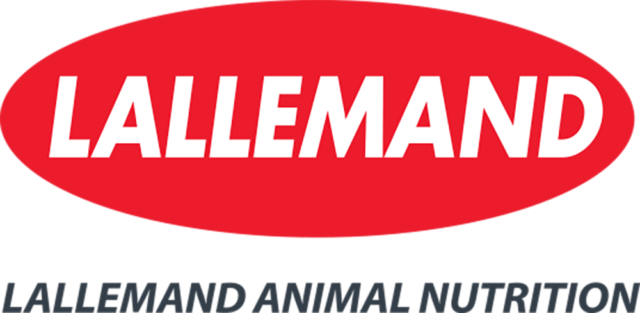With spring just around the corner, you may be starting to think about your forage plans for your operation. Whether you are ready to put your cows out on pasture or begin a new harvest of haylage, it’s important to know what you are feeding your animals. Routine forage sampling and analysis are key in ensuring your animals have a properly formulated ration to meet production goals, but sometimes it can be confusing to read and understand all the information on your forage test. Most commercial laboratories perform similar forage analysis tests, but the sample report may be presented in different ways. Here is a simple summary of some of the major components you may find on your analysis sheet.
General terms
Moisture – The percent water in a sample.
Dry matter (DM) – This refers to the feed without the moisture. Most laboratories will report nutrients on a dry matter basis.
As-fed – This represents the feed as it is presented to the animal. This may be referred to “as sampled” or “as received” on lab reports.
When utilizing this information from your report in adjusting your ration, it is important to correct for the percentage of DM within the feed. This ensures the animal is provided an appropriate quantity of feed to meet animal performance goals and nutrient requirements.
Protein terminology
Crude protein (CP) – An estimate of the protein content in a feed by measuring total nitrogen. This number is multiplied by a factor of 6.25 because protein is approximately 16% nitrogen (100/16 = 6.25).
Acid detergent insoluble nitrogen (ADIN or ADIP) – This refers to the amount of protein bound to fiber due to overheating. Also known as heat-damaged protein.
CP is truly a “crude” measurement because it includes both true protein (made of amino acids) and non-protein nitrogen (NPN; i.e., urea). Both NPN and true protein can be utilized in ruminants, with the former being used to make microbial protein in the rumen.
Carbohydrate terminology
Neutral detergent fiber (NDF) – This is a measurement of three of the components of the plant cell wall: cellulose, hemicellulose and lignin. Cellulose and hemicellulose can be broken down in the rumen, but lignin is indigestible. NDF is negatively correlated with intake (i.e., as NDF in forage increases, the animal will consume less forage).
Acid detergent fiber (ADF) – This refers to a measure of cellulose and lignin. This value is correlated with digestibility, therefore the higher the ADF, the lower the digestibility.
Non-fiber carbohydrates (NFC) – This is a calculation of the digestible carbohydrate fractions that include starch, sugar, pectin and fermentation acids. It is calculated using the following equation: NFC% = 100% – [CP% + (NDF% –NDFICP%) + EE% + Ash%]
Fat terminology
Crude fat (EE or oil) – Also referred to as ether extract. This is a measure of the total amount of fat within a feed soluble in ether. It is a “crude” estimate because it includes any waxes, pigments and non-lipid fractions in the sample.
Total fatty acids (TFA) – This is a more accurate measurement of fat within a feed, as fatty acids are the building blocks of lipids and can be utilized in many processes in the body.
Energy terminology
Total digestible nutrients (TDN) – This is the sum of the digestible protein, digestible carbohydrates and 2.25 times the digestible fat. This value is usually used for ruminants, but there are separate TDN values for horses.
Net energy for maintenance (NEm) – An estimate of the energy value of a feed to maintain basic animal processes.
Net energy for lactation (NEl) – An estimate of the energy value of a feed to support lactation.
Net energy for gain (NEg) – An estimate of a feed’s ability to provide energy above maintenance for bodyweight gain.
Ash and minerals
Ash – This is inorganic residue that is left over after a sample is burned at a very high temperature. This term contains the minerals in a feed.
The next seven minerals are macrominerals, meaning they are usually required by the animal in percent quantities.
Calcium (Ca) – This mineral is important in bone formation, blood clotting, muscle contraction and enzyme function as well as a major component of milk.
Phosphorus (P) – Also important in bone formation, energy metabolism and cell wall function.
Sodium (Na) – This mineral is essential for electrolyte balance, muscle contraction and glucose uptake.
Magnesium (Mg) – Important in enzymes and neuromuscular function.
Potassium (K) – This mineral is a major component in milk and serves as an important regulator in water and electrolyte balance and muscle contraction.
Sulfur (S) – Very important for microbes to make sulfur containing amino acids.
There are a number of minerals we call “trace minerals” or microminerals in that they are needed in trace amounts by the animal. This is usually a ppm amount.
Copper (Cu) – Required for coenzyme functions and hemoglobin formation.
Zinc (Zn) – This is an essential trace mineral involved in immunity, enzyme activity, etc.
Iron (Fe) – Involved in oxygen transport in the body.
Manganese (Mn) – Component of enzymes.
Selenium (Se) – Important in the body’s antioxidant systems, prevents white muscle disease.
Fermentation and digestibility terminology
pH – This measures the degree of acidity.
IVDMD – This is a measurement of digestibility determined by incubating a ground feed sample with rumen fluid in a beaker or test tube for 24 to 48 hours.
Neutral detergent fiber digestibility (NDFD) – This value tells us how digestible the NDF portion of the feed may be. There can be different incubation times, such as 24, 30 or 48 hours.
Starch digestibility (starchD) – This is a measurement of the digestible fraction of the starch. Some labs will use different time points, such as three, seven and 16 hours, but usually seven-hour starch digestibility is the standard. This measure can be used to estimate total tract starch digestibility.
Other terminology
Nitrates (NIT) – Nitrates accumulate in plants and can be harmful to animals at high levels. Some laboratories test for nitrate-nitrogen, while other labs test for total nitrates. You can use the following conversions to compare results from one lab to another:
- Nitrate nitrogen x 4.4 = total nitrates
- Total nitrates / 4.4 = nitrate nitrogen
Ammonia (NH3-N) – Increases in ensiled feeds where plant proteins are being broken down.
Relative feed value (RFV) – This is a calculated value that uses ADF and NDF measurements. It is based on the animals’ potential digestible DM forage intake.
Relative forage quality (RFQ) – This is a calculated value that utilizes TDN and NDF to estimate intake and forage quality. Both RFV and RFQ may be utilized as indices for comparing hay quality, but it is not used for ration formulation.
By understanding your forage tests, you can make more educated decisions on how you want to utilize the feed in your operation. Your nutritionist will use the results to balance your ration and make appropriate adjustments. Another consideration is to begin benchmarking your forages from year to year. For more information or questions regarding certain laboratory analyses, contact your designated laboratory.










